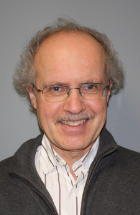Hermann von Grafenstein, Ph.D.

Associate Professor
Department of Medicinal and Biological Chemistry
Department of Pharmacology and Experimental Therapeutics
Wolfe Hall 2257A
Phone: 419.530.1920
Email: hermann.grafenstein@utoledo.edu
AREA OF RESEARCH
The focus of my research program is on developing a better understanding of how molecules that generate immune responses are handled by the adaptive and innate immune systems. Both systems use specific receptors to recognize the molecules they respond to. In both systems, these molecules are often first bound by proteins other than the specific receptor that initiates the response. The steps preceding receptor engagement are known as "antigen presentation". We expect that a better understanding of antigen presentation is key to a better mechanistic understanding of how inflammatory and autoimmune diseases develop. Interfering with antigen presentation is a means of preventing unwanted immune responses and the ability to design antigen mimics that are presented optimally is important for vaccine development.
Projects in innate immunity: The innate immune system recognizes signature molecules of pathogenic microorganisms via a set of genetically predetermined and invariant receptors. Well known receptors in this category are Toll-like receptors 1 though 10. There are only a few innate immune receptors facing a large variety of pathogens. Not only pathogen-derived molecules can be recognized by innate immune receptors but also the body's own molecules, especially if they have become modified by disease. For example, lipids in oxidized low density lipoproteins trigger vascular inflammation through Toll-like receptor 4 (TLR4). This is thought to be an early event during the development of atherosclerosis. It is not clear how a single innate immune receptor can simultaneously recognize various pathogen-derived as well as self molecules. Our research is aimed at developing a better understanding of this enigma. Activation of TLR4 requires that pathogen-derived or self molecules are first bound to Toll-like-receptor associated proteins, which then "present" the molecules to TLR4. CD14 and MD-2 are two examples of Toll-like receptor-associated proteins. Determining the structure of CD14 and MD-2 will shed light on how they interact with each other, how they bind pathogen- and self-molecules, and how they present these molecules to TLR4. This will pave the way to interrupting detrimental activation of TLR4 during the development of inflammatory diseases such as atherosclerosis. For structure determination we use X-ray crystallography, NMR (nuclear magnetic resonance), and hydrogen-deuterium exchange in conjunction with mass spectrometry and NMR.
Projects in adaptive immunity: Adaptive immune responses are controlled by antigen-specific thymus-derived lymphocytes (T cells). T cells recognize antigen not in its native form, but in the form of small peptides bound to MHC molecules. MHC moleulce present peptide antigens to T cells. The receptors for these peptide antigens, located on the surface of T cells, are not genetically predetermined. Rather, the genes for these receptors are generated during T cell development by randomly assembling genetic elements coding for pieces of the receptors. Because the repertoire of antigen receptors is essentially random, it includes self-reactive receptors that need to be eliminated. In order to reconcile the need to eliminate self reactive T cells and retain the ability to respond to a vast number of pathogen-derived peptides, the adaptive immune system has the ability to respond to different peptide-MHC complexes by either activating the responding T cell or inactivating it, depending on whether the peptide is derived from self-proteins or from pathogens. Often subtle differences in the structure of the MHC bound peptides have profound implications for the nature of the T cell response. Although X-ray crystallography has been valuable in providing structural information, it generally does not describe dynamic aspects of structure. We are developing alternative approaches based on computational structure prediction and verification of these predictions by proton-deuterium-exchange, mass spectrometry, and NMR. A key prediction of our previous computational studies is that mobile water molecules not only facilitate binding of different peptides to MHC molecules, but also allow peptides to change conformation. We are now experimentally verifying these predictions. A detailed knowledge of peptide-MHC binding will help design peptides that inactivate disease-promoting T cells and will also be useful for the design of better vaccines.
EDUCATIONAL BACKGROUND
| Ph.D. | Max Planck Institute of Biochemistry and University of Konstanz Biophysical Chemistry, 1983 |
| M.D. | University of Munich, Germany, 1982 |
| M.S. in Physics | University of Munich, Germany, 1976 |


